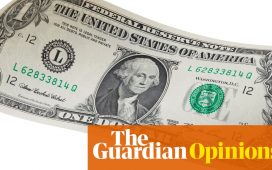Receive free US inflation updates
We’ll send you a myFT Daily Digest email rounding up the latest US inflation news every morning.
US inflation dropped to 3 per cent in June, lower than expected, in the latest sign that the Federal Reserve’s interest rate rises are having an effect on price pressures.
The annual increase in the consumer price index slowed from 4 per cent in May to 3 per cent, the slowest rate of inflation since March 2021.
Prices increased 0.2 per cent on a monthly basis in June, up from 0.1 per cent the previous month but less than economists had forecast. The annual figure was further helped by so-called base effects, as extremely large rises from June 2022 drop out of the calculations.
There was a more modest dip in the core CPI, which slowed to an annual rate of 4.8 per cent in June, from 5.3 per cent. Core prices, which strip out volatile food and energy costs, rose 0.2 per cent month on month, compared with 0.4 per cent in May.
The two-year Treasury yield, which moves with interest rate expectations, fell to its lowest level in two weeks after the CPI data was released. Futures markets were still pricing in a high likelihood of a rate increase in July, but scaled back bets on higher rates later in the year.
US stocks opened higher, with the S&P 500 up 1 per cent in early trading on Wednesday morning and the Nasdaq Composite jumping 1.2 per cent.
The headline rate of inflation has been moving closer to the Fed’s 2 per cent target after peaking at more than 9 per cent in June 2022. However, core inflation has proved more sticky, raising expectations that the US central bank will need to lift interest rates further.
“Headline inflation is coming down, but . . . there is still quite a distance to go from 4.8 per cent to where the Fed wants core inflation to be at 2 per cent,” said Torsten Slok, chief economist at Apollo Global Management. “Taken with the employment report, this is still likely to mean another interest rate increase.”
The Fed has raised its benchmark interest rate to a range of 5 to 5.25 per cent from close to zero at the start of 2022. Officials kept rates steady at their most recent policy meeting in June, to take stock of the effect of previous rises, but have made clear that they expect further increases before the end of the year.
Labour market data released last week also suggested that the Fed’s aggressive rate rises were beginning to cool the economy, with jobs growth slowing. However, it also highlighted continued inflationary pressures, with unemployment still close to a multi-decade low and wages growing well above the levels considered consistent with the Fed’s target inflation rate.
Sophia Drossos, economist at Point72 Asset Management, said the Fed was likely to raise rates later this month, but added that the combination of Wednesday’s data and tentative signs of cooling in the labour market “reinforces the view that the path for the Fed is more uncertain after July”.
“What we’re seeing is consistent with the market scaling back tightening expectations for after the July meeting, but it doesn’t seem that it should be pricing in scope for rate cuts this year. This is consistent with higher for longer, perhaps ‘one and done’ as the Fed goes on pause and assesses the information and considers its next move,” she said.
Additional reporting by Kate Duguid in New York







